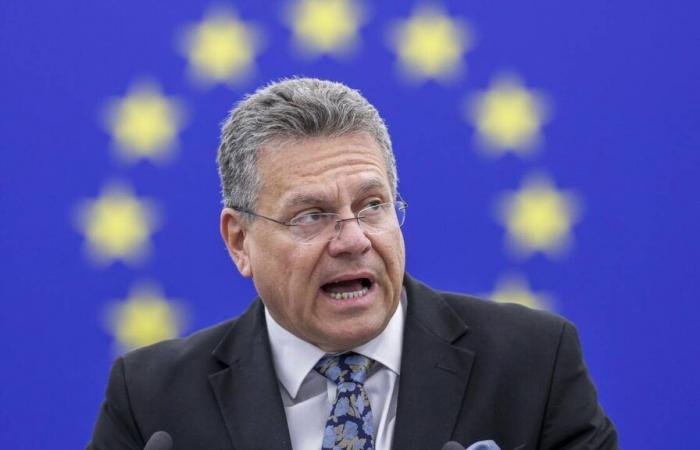The discussions between the member states and in the Parliament promise to be sensitive, against the backdrop of fears of a new outbreak of energy prices. Admittedly, the share of imports of Russian gas in the European Union increased from 45% in 2021 to 19% in 2024. But if the EU endeavored to reduce its supplies by gas pipelines, it has partly turned towards liquefied natural gas (LNG), transported by ship, unloaded in ports, reversed then injected into the European gas network. LNG imports thus reach records.
The main issue will be that of the diversification of supplies
And far behind the United States (45%), Russia occupies a central place in this area with 20% of EU imports in 2024, or 20 billion cubic meters over the hundred billions imported. The walk will be high, while the commission promised in 2022 to do without Russian fuels “by 2027”.
One of the major challenges will be the diversification of supplies. The EU had mentioned several months ago the possibility of further increasing its American LNG imports. But trade tensions with the United States of Donald Trump have scrambled the cards. It was not until May 1 that the European Commissioner for Trade, Maros Sefcovic, suggests again in an interview with Financial Times To “solve very quickly” the dispute with the Trump administration thanks to purchases of American LNG or agricultural products such as soybeans.
The American president himself put strong pressure on the Europeans in early April by claiming them to massively command energy in the United States, up to $ 350 billion (309 billion euros). “The Commission is likely to replace a disastrous dependence by another – disconnect the gas from Putin and plug that of Trump,” said the Greenpeace environmental organization, which pleads for energy savings and the development of renewables.
How will the member states position themselves? Some like Hungary do not hide their proximity to Moscow. Others are increasingly dependent on Russian LNG. France finds itself for example on the front line with its five regzéification terminals including that of Dunkirk. According to the IEEFA reflection group, it increased its Russian LNG imports between 2023 and 2024 by 81% and paid 2.68 billion euros to Russia.
-What impact on prices?
For its part, Totalenergies had already warned in the past against the risk of an increase in prices if Russian energy is banned. Beyond the liquefied gas, the European Commission continues to highlight all the efforts that have been made to reduce dependence on Russian fossils since the invasion of Ukraine.
An embargo on Russian oil imports was thus established at the end of 2022 in the EU. “We went from one barrel of five to five to one barrel out of fifty,” insisted Ursula von der Leyen at the end of April in London.
With its new roadmap, Brussels promises new actions against the Russian ghost fleet, often aging oil ships operated under a foreign pavilion, accused of being used to bypass Western sanctions.
Measures against Russian imports of enriched uranium are also mentioned for the month of June. “Today, the European Union sends a very clear message to Russia: we will never allow Russia to use energy as a weapon against us,” said European Commissioner Dan Jorgensen.








